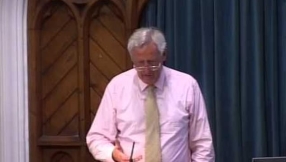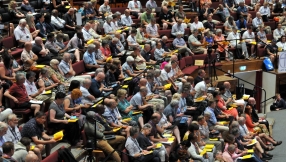
The Church of England saw a "gradual but steady" reduction in its carbon emissions during 2021.
Its nationwide carbon emissions are being tracked by its Energy Footprint Tool (EFT), which was launched in 2019.
The latest data from the EFT published this week reveals that carbon emissions fell by 5,000 tonnes between 2020 and 2021, to 410,000 tonnes.
Data was gathered from 39 per cent of churches and 68 per cent of Church of England schools.
It is the first time that the data includes Church of England schools and travel-related carbon emissions.
The figures showed an increase in the number of churches reporting 'net zero' carbon emissions, rising by 157 to over 400 churches last year.
They also revealed a slight increase in churches switching to renewable energy tariffs, from 31 per cent to 33 per cent.
The Bishop of Selby, John Thomson, who is the Church of England's lead bishop for net zero carbon, said he was optimistic that the rate of change will rise as more resources are developed to support churches, schools and other CofE buildings reduce their carbon emissions.
"While there is more work to do, there are some positive indicators that the Church of England is making progress towards our target, and every effort, small or great, is important and welcome," he said.
"Despite the welcome return to public worship and to schools in 2021, the carbon decrease on the previous year is cause for encouragement."
He continued, "At a time when fuel poverty is affecting millions, as Christians we have a duty to respond. Across the church estate this means ensuring that the buildings are as energy efficient as possible and that we are moving away from expensive fossil fuels by changing technology and using energy from green, sustainable sources.
"These are the solutions needed everywhere to halt global warming and to abate energy poverty."













